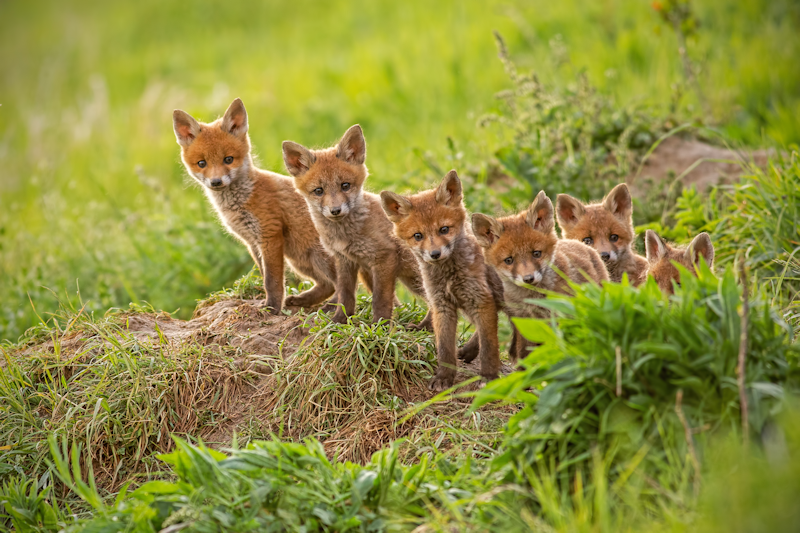Introduction
Trapping is a vital tool in wildlife management, particularly for controlling the populations of fur-bearing animals. This practice is essential for maintaining ecological balance and ensuring the sustainability of wildlife populations. This essay explores the importance of trapping in population control, its benefits for sustainable wildlife, and answers frequently asked questions to help residents understand its necessity.
The Role of Trapping in Population Control
Trapping is a method used to manage wildlife populations by selectively removing certain animals, particularly fur bearers such as raccoons, beavers, and coyotes. This helps prevent overpopulation, which can lead to severe ecological imbalances. Here are some key reasons why trapping is crucial for population control:
- Habitat Preservation: Overpopulation of certain species can lead to habitat degradation. For instance, an excess of beavers can result in the flooding of large areas, destroying vegetation and displacing other wildlife. By controlling beaver populations, we protect the integrity of wetlands and forested areas.
- Disease Control: High population densities can increase the spread of diseases among wildlife. Diseases such as rabies and distemper are more likely to spread in densely populated areas. Trapping helps maintain healthy wildlife populations by reducing the spread of these diseases.
- Preventing Human-Wildlife Conflicts: Overpopulation often forces wildlife to venture into urban areas in search of food, leading to conflicts with humans. Trapping reduces these conflicts by keeping wildlife populations in check and away from residential areas.
Sustainable Wildlife Management
Sustainable wildlife management aims to maintain healthy and balanced ecosystems. Trapping plays a significant role in this by ensuring that no single species becomes too dominant. Here are some benefits of trapping for sustainable wildlife management:
- Biodiversity Conservation: By preventing the overpopulation of certain species, trapping helps maintain biodiversity. This ensures that various species can coexist without one species outcompeting the others for resources.
- Ecosystem Stability: Trapping helps maintain the balance between predator and prey species, ensuring that ecosystems remain stable. For example, controlling coyote populations helps protect smaller mammals and bird species that might otherwise be preyed upon excessively.
- Economic Benefits: Trapping can provide economic benefits through the sale of fur and other animal products. Additionally, it helps save costs associated with damage control and repair caused by wildlife, such as flooding by beavers or property damage by raccoons.
Case Study: Beavers in Maryland
Beavers are known for their dam-building activities, which can lead to flooding and destruction of property. Trapping has been used effectively in Maryland to manage beaver populations, preventing extensive damage to wetlands and agricultural lands. By controlling beaver numbers, we can protect water quality and maintain the natural flow of rivers and streams, which benefits a wide range of aquatic and terrestrial species.
FAQs on Trapping
- Is Trapping Cruel to Animals?
Modern trapping techniques are designed to be as humane as possible. Trappers use regulated traps that minimize stress and injury to animals. Maryland’s Department of Natural Resources ensures that trappers follow ethical guidelines and humane practices.
- How Does Trapping Benefit Other Wildlife?
Trapping helps control populations of species that might otherwise become too numerous and disrupt ecosystems.
- How Is Trapping Regulated?
Trapping is regulated by state and federal wildlife agencies. In Maryland, trappers must obtain licenses and adhere to regulations regarding the types of traps used, trapping seasons, and the species that can be trapped. These regulations ensure sustainable and ethical trapping practices.
- Can Trapping Help Control Invasive Species?
Yes, trapping is an effective method for controlling invasive species that threaten native wildlife and ecosystems. For instance, trapping efforts have successfully managed populations of the invasive nutria, which damages wetland habitats.
Conclusion
Trapping is an essential tool for maintaining ecological equilibrium and ensuring the sustainability of wildlife populations. By regulating wildlife numbers, trapping helps preserve habitats, control the spread of diseases, and reduce human-wildlife conflicts. It is crucial to support and adhere to regulated trapping practices to protect Maryland’s diverse and vibrant ecosystems.

